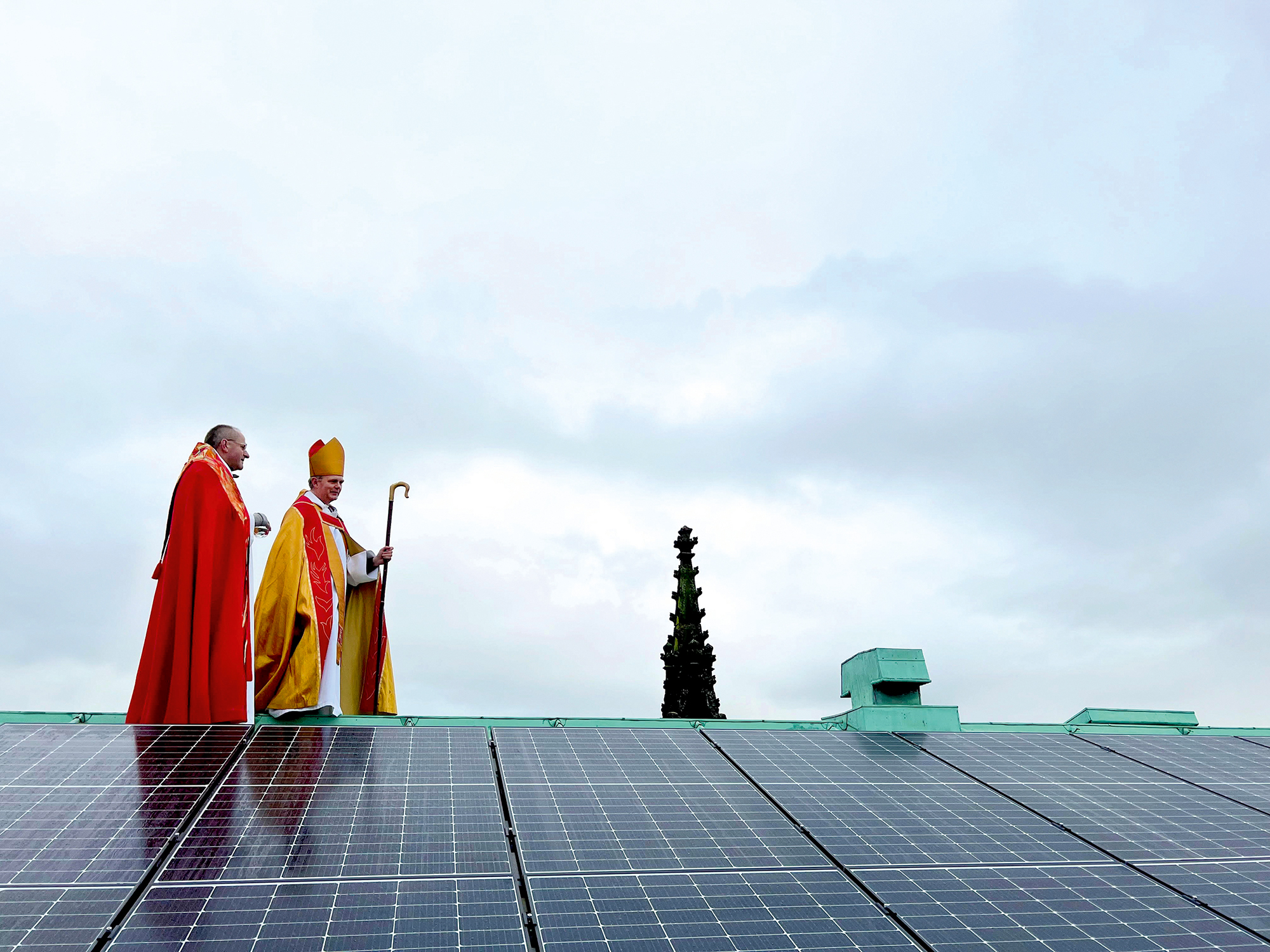
Chester Cathedral has installed 206 roof-mounted solar panels, the most ever fitted to a British cathedral, it was announced earlier this month. The panels, which are positioned on the south roof slope of the nave and quire and east slopes of the south transept, are already producing electricity and were paid for via a successful fundraising campaign. Chester Cathedral, whose earliest elements date to the 11th century, is Grade I listed and the plans received the blessing of the Cathedrals Fabric Commission, which considers applications for works to cathedrals in England.
The introduction of the panels to the church roof was ‘not without its challenges’. Architects and historic-building consultants Donald Insall Associates were retained to carry out the work, which involved protecting the fabric of the building, and incorporating a ‘major engineering intervention’ into a listed building within a city-centre conservation area. Structural engineers had to check that the roofs were capable of supporting the panels, before the firm developed metal cradles to hold the panels without penetrating or damaging the lead-and-copper roof.
The firm also gave credit to Sir George Gilbert Scott, who remodelled the cathedral in the late 19th century, saying that his pinnacled parapets conceal most of the roof from view, thus addressing the visual disturbance of the panels more than 100 years later. The panels and their cradles can be removed, meaning the entire project is reversible. Analysis from Donald Insall Associates suggests that the solar-energy system will generate 44,000kWh each year, ‘representing a saving of at least £130,000 in electricity costs for a period of 20 years’ and that the project will pay for itself in about seven years.
‘Historic buildings can and must play a leading role in mitigating climate change,’ said Tony Barton, chairman at Donald Insall Associates. ‘The project to update a Grade I-listed structure almost invisibly with solar panels demonstrates precisely what we have been advocating for: a creative conservation approach accompanied by a degree of flexibility within the planning system that acknowledges our responsibility to both our built heritage and the planet. We need to ensure that historic buildings are not left behind in our race to achieve carbon net zero.’
Chester will not hold its record of ‘most solar panels on a church roof in Britain’ for long, as the chapel at King’s College Cambridge has recently received approval for 492 panels. Councillors for Cambridge City Council voted through the application, despite it being recommended for refusal by city council planning officers, citing the plans as a ‘symbol’ for climate change. The report by the planning officers said that the panels would ‘detract’ from the architecture of the roof and that they would damage views of the chapel. Councillors disagreed, saying that the benefits of the scheme would outweigh any harm and that, as at Chester, the scheme could be reversed if required without any damage to the Grade I-listed building. The panels will contribute to a 1.4% reduction in carbon consumption across the King’s College estate, according to the plans.
‘As the planning committee noted, the panels will have only a very minimal impact on the visual appearance of the chapel,’ said Prof Michael Proctor, provost of King’s College Chapel. ‘It will make a considerable difference in the process of decarbonisation by meeting 100% of the energy needs of the building and reducing the college’s carbon emissions by more than 27 tons each year.’

Credit: Getty Images
Exquisite houses, the beauty of Nature, and how to get the most from your life, straight to your inbox.
The solar panels that will work even in Britain's appalling weather
A team based in one of the sunniest places on the planet claims to have invented a new type of

Sarah Raven: The flowers I have that are flourishing superbly, despite the battering heat of this summer
Gardener and writer Sarah Raven on the flowers that haven't wilted in the heat.
Toby Keel is Country Life's Digital Director, and has been running the website and social media channels since 2016. A former sports journalist, he writes about property, cars, lifestyle, travel, nature.

